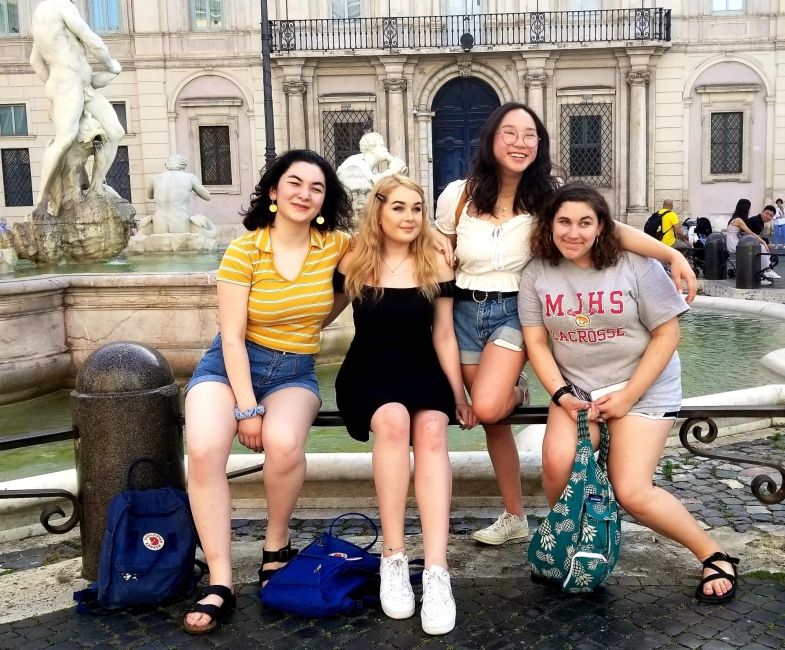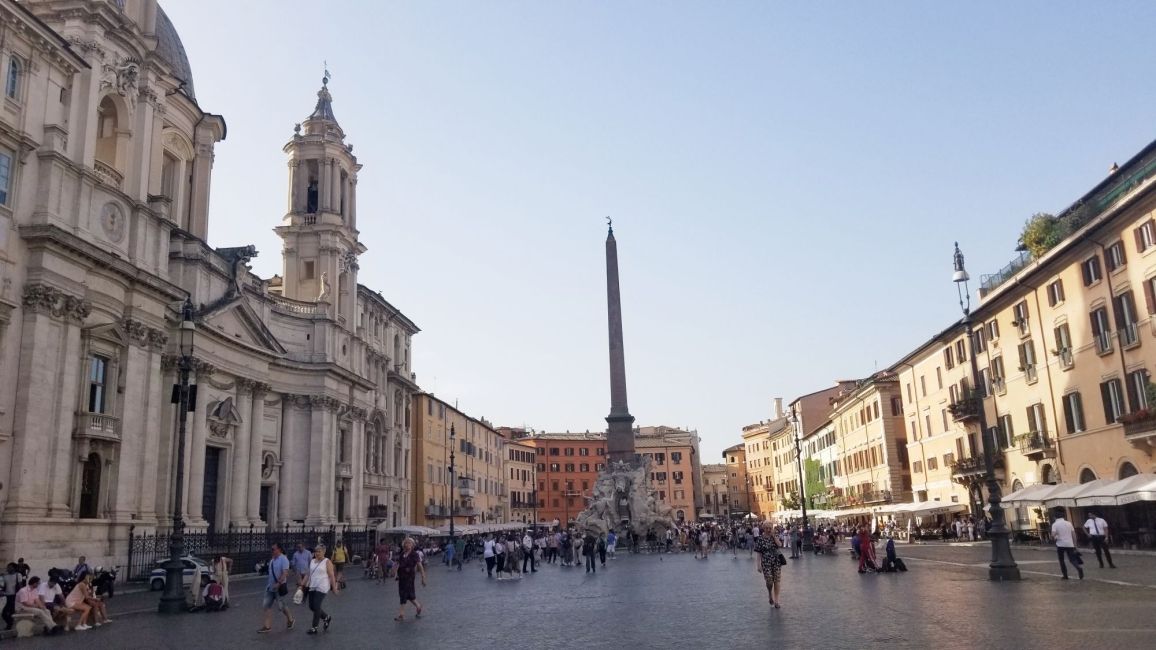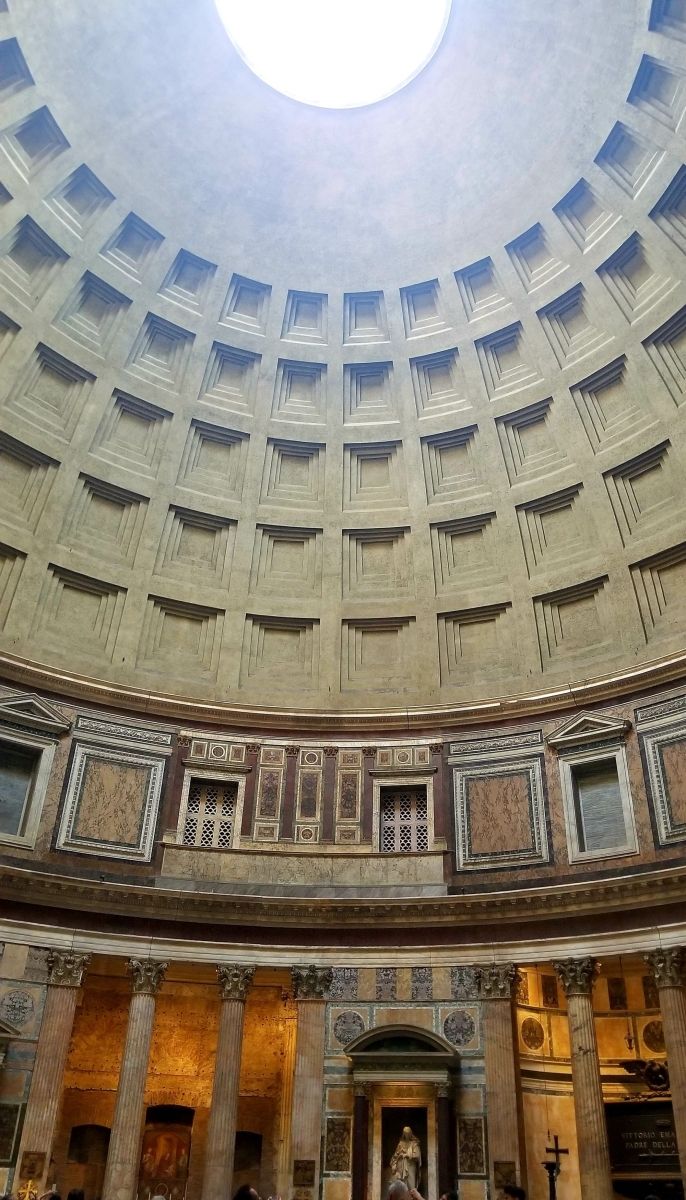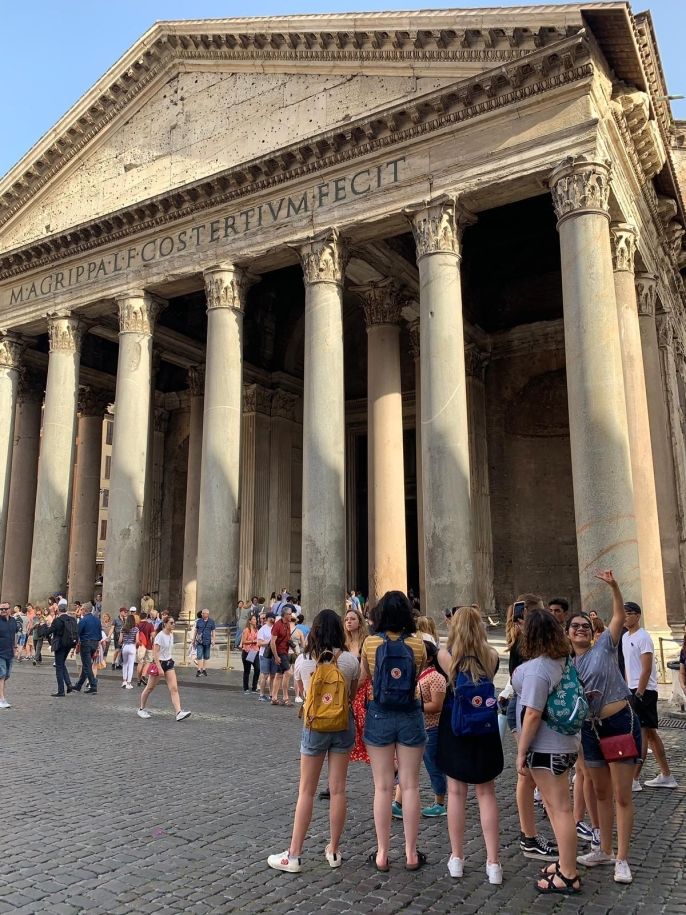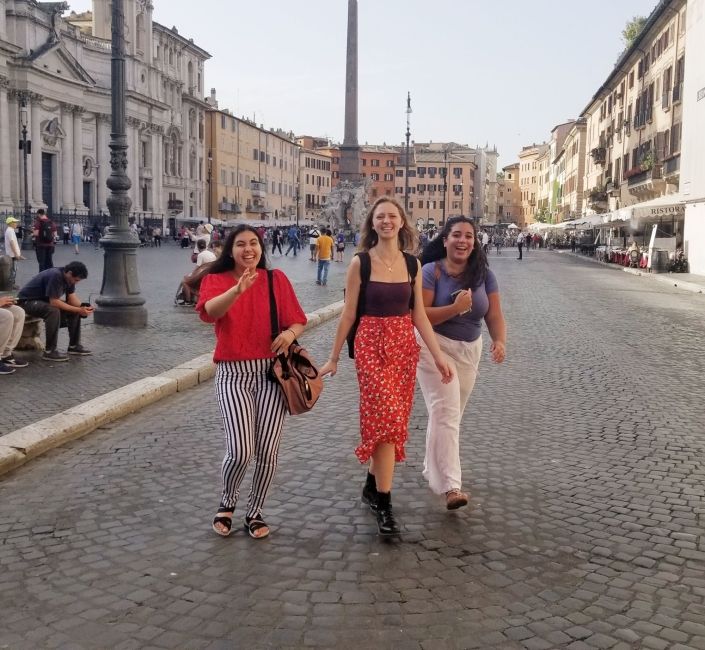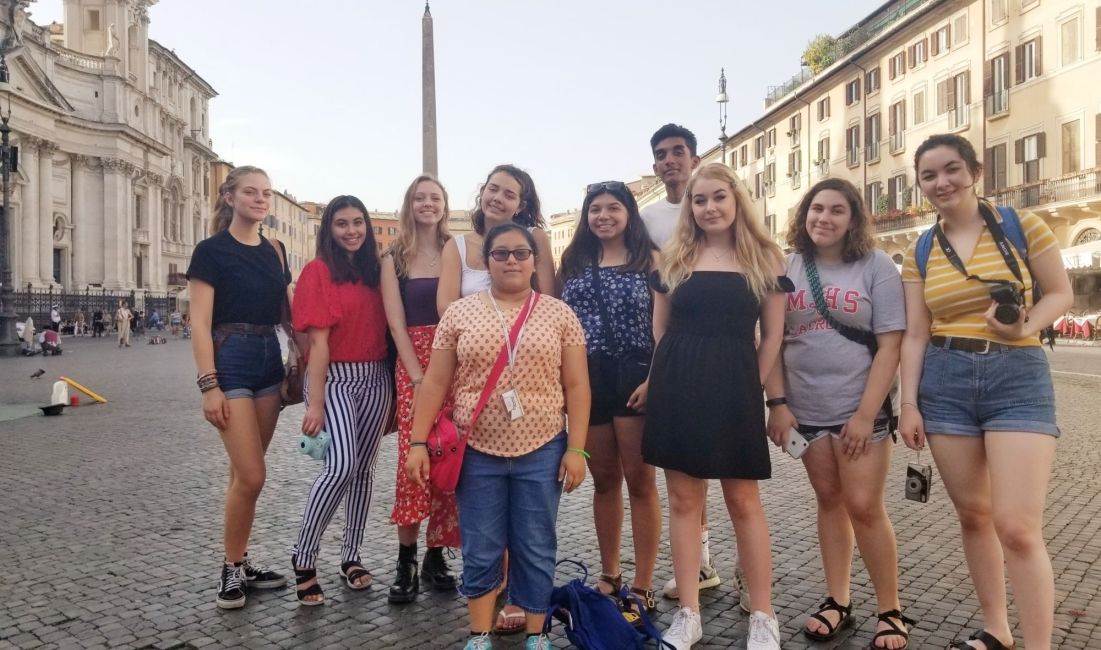Centro Storico
Here in Rome, yesterday was a full day of classes. We started the day with our first “survival” Italian class. We learned the basics of Italian, including: letters, numbers, greetings, and how to ask and answer basic questions, such as “How are you?” “Where do you live?” “How old are you?” and “What is your name?”. Our Italian teacher Ilaria spoke to the class predominantly in Italian, since full immersion is the best way to learn a language! After class, many students were practicing introducing themselves and saying “Hello” and “Thank you” when we ordered lunch, dinner, and gelato.
After lunch, we had our first art history lesson from Simona, a well-known archeologist in Rome. We covered thousands of years of Roman history in only a few hours! We learned about the legend of the founding of Rome, and how it developed into one of the most powerful civilizations of the ancient world. We discussed some of the most infamous Emperors, incredible feats of engineering, and the daily life of the ancient Romans.
After class, Tylar and I decided to take the students on an excursion to the Centro Storico so the students could see this history in real life. We walked to Piazza Navona, which was once the site of the Stadium of Domitian, built in the first century AD. We took in the sights of three beautiful fountains, including the famous “Fountain of the Four Rivers”, designed in 1651 by Gian Lorenzo Bernini and which depicts the four continents which were known at that time: The Danube (Europe), Rio de la Plata (the Americas), the Nile (Africa) and the Ganges (Asia).
From Piazza Navona, we continued on to the Pantheon. In our art history class with Simona in the morning, we learned that “Pantheon” means “temple of all the gods” and is a former Roman temple, which now serves as a church. It was completed by the emperor Hadrian and dedicated about 126 AD. Students took in the awe-inspiring oculus located in the center of the dome, as well as the tombs of numerous Italian kings and queens and the Renaissance painter Raphael which are located inside.
Of course, it wouldn’t be a day in Rome without a stop for gelato at Giolitti, a famous gelateria near the Pantheon which has been in business since 1900. If it’s good enough for Audrey Hepburn and Gregory Peck in the classic film Roman Holiday…it’s good enough for us!
As time goes by, students are learning more and more of the idiosyncrasies of life in Italy. For example, you usually have a choice between still or sparkling water in restaurants. Meals typically last longer than they do at home. And walking is usually the best way to get around!
Until next time...
Related Posts
Lost in Florence: Finding Art in Every Corner
When Sam writes an article, you know the students are waking up early! Let's set aside thoughts of the Colosseum and the ancient Romans for a moment because we’re about... keep reading
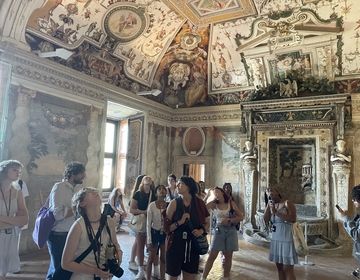
Once Upon a time … in Tivoli!
Nestled in the Italian region of Lazio, the charming town of Tivoli is a testament to Italy's rich historical tapestry and natural beauty. Just a short drive from Rome, Tivoli has been a favored retreat since ancient times, offering a perfect blend of natural splendor and architectural marvels. Among its many attractions, Villa d’Este stands out as a jewel of Renaissance architecture and landscape design.
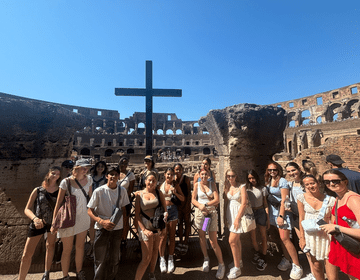
Rome-ing with CIEE: Colossal Adventures at the Colosseum and Forum!
The alarm rang a bit earlier today, signaling the start of an exciting day for the students and their Program Leaders as they embarked on their first bus ride in... keep reading
